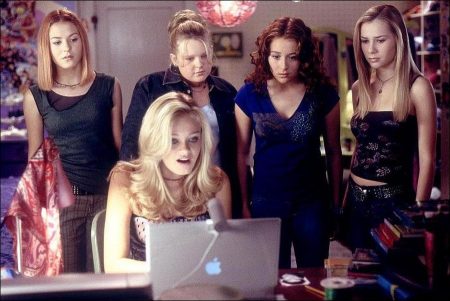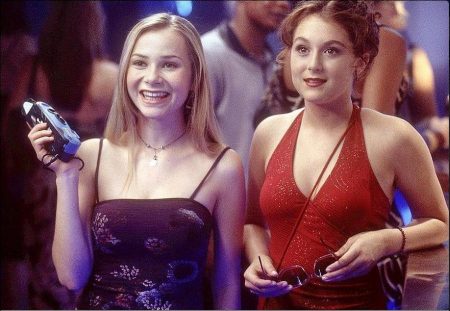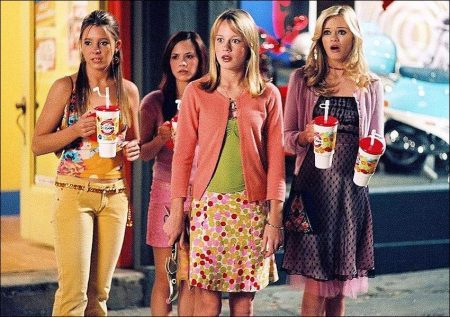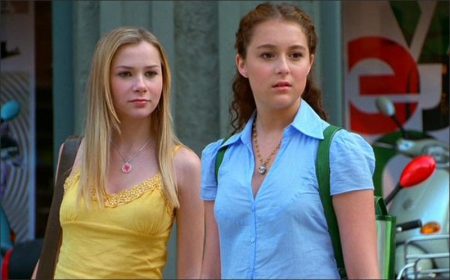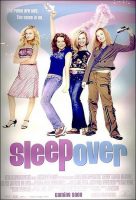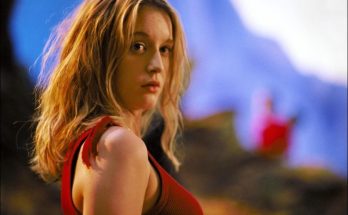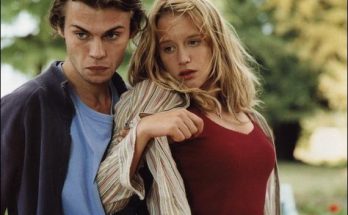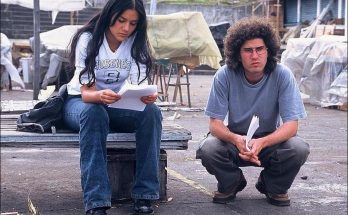The initial idea for Sleepover came to producer Chuck Weinstock when he realized that his own children, aged 6 and 9, could not see any of the films he had made. They were too young.
“My son became obsessed with the motion picture rating code,” says Weinstock. “I decided I should come up with a movie he and his sister could actually see, so I started thinking about what mattered to them.
Soon enough he thought of the sleepover, that suburban rite of passage. “Sleepovers are an important assertion of freedom for kids,” Weinstock continues. “It’s how they practice leaving home.”
At the time, Weinstock had a producing deal with Bob Cooper’s company, Landscape Entertainment, and together they took the film to MGM. They quickly enlisted writer Elisa Bell to come up with her own sleepover ideas and fashion a screenplay.
“I had a lot of sleepover parties when I was young, and I knew they hadn’t really changed too much since then,” says Bell. “One thing I knew immediately was that the girls were going to have to sneak out of the house. We always did!”
The writer patched together several ideas from her own slumber parties as well as keeping an ear open at malls and amusement parks to hear what today’s young girls were getting themselves into. One group she approached was on a frenzied scavenger hunt, giving the writer her idea for why Sleepover’s characters would dare to leave the house.
“Also, I decided what was at stake: the primo lunch spot at high school,” says Bell. “If you got that spot, you were automatically cool. It defines who you are in school. The nerds sit in one place, the popular kids in another – and that hasn’t changed. I went back to my old high school not long ago and the same kids were eating in the same places.”
Producers Weinstock and Bob Cooper (of Landscape Entertainment) started their search for a director who would bring a fresh touch to the story while lending a talented hand to the filmmaking. First-time feature film helmer Joe Nussbaum, a young director of commercials and television, had shared earlier film projects with both Weinstock and Cooper as well as Elisa Bell.
One look at the script and Nussbaum clamored for a chance to direct. “Chuck mentioned his idea over lunch one day and told me Elisa, whom I knew, was writing the script,” says Nussbaum. “When I saw the script, I loved it. It was a throwback to movies I saw as a kid like Sixteen Candles and Ferris Bueller’s Day Off. These films stand the test of time because they have a lot of heart as well as laughs.”
Nussbaum is a graduate of the University of Southern California Film School. He has been involved with several feature film projects after graduation thanks in part to the success of his seven-minute calling card: a short film called George Lucas in Love he directed and co-wrote in 1999. Thinking most film executives had very little time to view full-length features, he and producer (and USC alum) Joseph Levy created a film that could be viewed in under ten minutes.
As a result, the comedy short not only brought Nussbaum job offers, but also became one of the most popular-selling shorts in history. After a studio meeting, Nussbaum convinced the filmmakers he was right for the project. “I told the studio how much I loved the story and how we could make it colorful and funny,” Nussbaum continues. “I wanted people to love these girls in the script and go on this adventure with them. Lucky for me, they agreed and gave me the job.”
“Joe is one of the few young directors who is good at both craft and storytelling,” says producer Bob Cooper. “Everyone who saw his short film knows he’s fantastic.”
Once Nussbaum was on board, the search began for the young talent who would star in the film. The filmmakers were determined to find girls and boys who were same age as those in the script instead of finding 18-20-year-olds and having them play young.
“We all believed there was a delicate balance to casting kids this age,” says Cooper. “There is a big difference between real fourteen or fifteen-year-olds and actors who are already out of high school.”
This realistic casting posed a few production challenges, however, related to the young actors’ ages. The Screen Actors Guild has strict rules governing how long a young actor can work, and also mandates they have schooling time during their workday.
“Working with kids always creates scheduling problems, since they can only work so many hours a day,” says Weinstock. “But working with kids at night is a scheduling nightmare. However late in the day you begin shooting, you have to end by 10:00. Well, if you’re shooting night exteriors and it isn’t getting dark until 8:00, that’s not much time.”
It was decided to create a reproduction inside a soundstage of the main site of the sleepover: Julie’s house. Filming inside would lengthen the shooting day for the kids and allow flexibility to the schedule by covering as many night scenes as possible during the day. A faithful reproduction of a real location house was erected at Hollywood’s Raleigh Studios that included a full-scale backyard complete with a huge play fort and wobbly trellis.
One fourteen-year-old actress stood out in the minds of the filmmakers to play the film’s young lead, Julie: Alexa Vega, star of Robert Rodriguez’s successful Spy Kids adventure trilogy.
In that trio of adventures, Vega played “Carmen Cortez,” a role that brought her considerable acclaim as well as status among young moviegoers as a true movie star. Although just fourteen, Vega is a veteran. She worked in lead roles as a small child, such as in Rob Reiner’s Ghosts of Mississippi which she acted in at age 6. The actress also was athletic and adept at both comedy and drama, traits that would serve her well in the pivotal Sleepover role.
“I was very excited when we signed Alexa,” says director Nussbaum. “I had seen her work in Spy Kids and thought she displayed great spunk and personality. She’s also incredibly athletic and is used to doing stunts. Additionally, I think young girls can relate to Alexa, whose character has to grow and change as our story unfolds.”
Vega appears in basically every scene in the film as the story careens through one crazy night. In signing on to do the role, she found she’d have to jump off a rooftop, ride a skateboard, scale a wall, climb a rope, race through malls and neighborhoods – and all in a tight red dress and high heels.
“I knew the skateboard work would be easy for me, because I am a tomboy at heart,” says Vega. “I ride skateboards a lot anyway. I run cross-country, I swim, I play water polo. I think it was harder for me doing the girly-girl stuff like dressing up and wearing grownup shoes all the time, but I also liked the fact I had to wear that dress. I feel the story is about transformation, and my character has a lot of transforming to do for one night.”
Once the lead actress was set, a massive casting search yielded a mixture of veterans and novices for the key roles. To carry much of the comic weight, savvy performers were added to the cast such as Jeff Garlin (HBO’s Curb Your Enthusiasm) as Julie’s dad, Jane Lynch (A Mighty Wind) as Julie’s mom, Sam Huntington (Jungle to Jungle) as brother Ren, and Steve Carell (Bruce Almighty) as inept security man Sherman Shiner.
For Julie’s pals and classmates, experienced actresses Mika Boorem (Blue Crush) as Hannah and Sara Paxton (Liar Liar) as Staci were chosen along with relative feature film newcomers Scout Taylor-Compton as Farrah and Kallie Flynn Childress as Yancy.
The four “friends of Julie” soon became a tight unit on set, while the “popular girls” played by Sara Paxton, Brie Larson, Eileen Boylan and Katija Pevec also became close pals.
The “skater dudes” played by Evan Peters, Shane Hunter, and Hunter Parrish appeared from time to time to throw a little male spice into the mix and heighten the energy level during their many slapstick scenes.
“A lot of these young actors are going to surprise people, and many of them may well pop,” says Weinstock. “We tried to cast honestly and the result is a group of very funny, very memorable performances.”
For director Nussbaum, two of the most pleasant surprises came from those actresses with the least experience. “Scout Taylor-Compton, who plays Farrah, is just wonderful,” says Nussbaum. “She’s got an incredible energy and is so naturally funny. Kallie Flynn Childress as Yancy is also really cute and has an beautiful screen presence. Because so much of the action revolves around Alexa and Mika’s characters, Kallie and Scout had to always be listening and reacting well, which is one of the harder things to do on screen.”
Once the cast was in place, the interior scenes based in Julie’s house were first to be shot onstage inside Raleigh Studios. There the relationships so vital to the film were created and explored while shooting the actual sleepover and subsequent white-knuckled escape from the house in pursuit of scavenger hunt victory. While the girls were getting to know one another, actor Sam Huntington got to interact with another kind of actor: dog star Chopper. He played the Corkys’ lovable pet who aids the girls by helping to cover up their absence by woofing down pizza and wearing noisy high heels.
“I had never worked with a dog before,” says Huntington, “and he was truly a trip. He was a very sweet pooch and we had to suffer the indignation of wearing high heels together.
One thing was odd, though: he didn’t like eating the pizza. My real dog would have been all over those pizzas! You never know what to expect from an animal actor.”
A key portion of the interior scenes involved the dangerous escape of the house using a creaky rose trellis as well as the last minute return to the bedroom at the end of the night using a treehouse fort that shudders its way onto the roof. Stunt coordinators Charles Croughwell and Mika Saito made sure each actress was schooled in every stunt, many of which were done by the actresses themselves. In fact, much of Julie’s acrobatics on the skateboard were done by Alexa Vega, though a stunt performer stood in for the more dangerous portions such as jumping a Great Dane or careening downhill.
“You’d be amazed at how well Alexa rides that skateboard,” says Nussbaum. “She also did some other great stunts, like hanging upside down on the trellis and the rope between the house and the falling fort. The girls got really excited about the stunts. They even got to drive a lot in our little electric car.
Because Kallie Flynn Childress had her learner’s permit, she got to drive the tiny Nissan hybrid car used by the girls in the film to whiz around during their scavenger hunt.
“This little electric car was the cutest thing we had ever seen,” says Childress. “I want that car so bad! It’s this little green plastic-like ball of metal meant for two passengers. But of course, all four of us have to cram ourselves into it all night. We were sitting on top one another and laughing hysterically.”
The lack of room almost caused a potential mishap, as Scout Taylor-Compton’s foot got wedged under the brake during a chase scene and Kallie Flynn Childress was unable to stop the car when “cut!” was called.
“Kallie was screaming at me: ‘You gotta move!’” recalls Taylor-Compton. “My foot had slipped under the brake and I could not budge it. We were heading for disaster. That was too exciting!” Fortunately, she was able to wriggle her foot free.
For Mika Boorem, however, the toppling backyard fort presented the biggest danger. “The first time I went up there I thought, ‘I can’t believe how high we are!’” says Boorem. “We were at least twenty-five feet straight up in the air on this soundstage – I was scared. The stunt directors calmed me down and showed me how the fort would go down pretty slow, but when we were rolling film, it went really fast and jerky. It was scary, but it was fun!”
Sleepover (2004)
Directed by: Joe Nussbaum
Starring: Alexa Vega, Mika Boorem, Kallie Flynn Childress, Jane Lynch, Eileen April Boylan, Sara Paxton, Brie Larson, Summer Glau, Sam Huntington, Katija Pevec
Screenplay by: Elisa Bell
Production Design by: Stephen McCabe
Cinematography by: James L. Carter
Film Editing by: Craig Herring
Costume Design by: Pamela Withers
Set Decoration by: Teresa Visinare
Art Direction by: Drew Boughton
Music by: Deborah Lurie
MPAA Rating: PG for thematic elements involving teen dating, sensuality, language.
Distributed by: Metro Goldwyn Mayer
Release Date: July 9, 2004
Visits: 422
